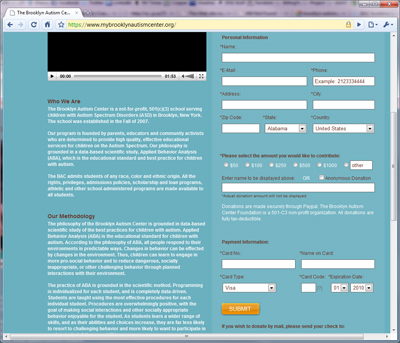eLearning Series
The Goal: Raise $50,000 via targeted email campaign, online donation form, and a short video. (Campaign has raised $76,625 to date.)
Our Pitch / Idea: Mark Wood on our team listened closely to the needs of the Brooklyn Autism Center, and devised a personalized email campaign and donation system that would help them raise funds for needy children. Using a decade of knowledge in the email and direct marketing industry, Mark made sure that strong, compelling calls to action would motivate people to donate generously.
Brooklyn Autism Center Academy Background: The Brooklyn Autism Center is a not-for-profit, 501(c)(3) school serving children with Autism Spectrum Disorders (ASD) in Brooklyn, New York. Established in 2007, their philosophy is grounded in a data-based scientific study, Applied Behavior Analysis (ABA), which is the educational standard and best practice for children with autism.
How the Campaign Worked:
Step 1: Email Campaign The first step was to reach out to 2,455 friends, family and past donors with a personalized email campaign. The campaign was signed to use calming visual line art, engaging photos and a strong call to action (Donate Now). 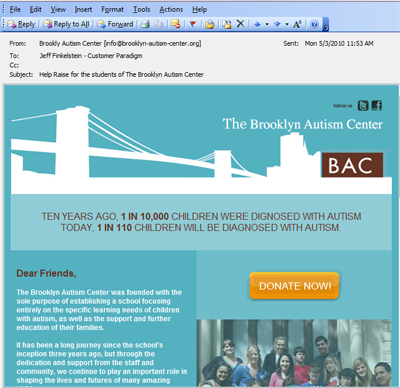
The email set up the problem: Ten years ago, 1 in 10,000 children were diagnosed with autism. Today, 1 in 110 children will be diagnosed with autism.
The system sent out a unique, personalized email message to each recipient. Each message was tracked to see who opened it (and how many times) and who clicked on a link (and which link and how often).
Want help with your non-profit’s fundraiser?
Message Open Statistics: ![]()
64% of the people opened the message; a normal message open rate is about 17%, indicating that the message was relevant and well received.
Clickthrough Tracking Statistics: 
Nearly 17% of the recipients clicked through to the landing page. To put this into perspective, a typical clickthrough rate ranges between 0.5% and 1.5% for many email campaigns.
Message Forward Statistics: 
Even more impressive was the number of people that forwarded the message along to friends. While we don’t track who the message was sent to, we’re able to track that a message sent to one person was opened on multiple different computers.
Message Opens By Date: 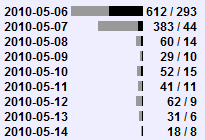
Most email campaigns are opened within a day or two of the initial sending, and the reporting demonstrated that most of the messages were opened the first and second day.
Secondary Calls to Action: The email also had secondary links for participants to follow them on Twitter and Facebook.
Facebook was much more successful: 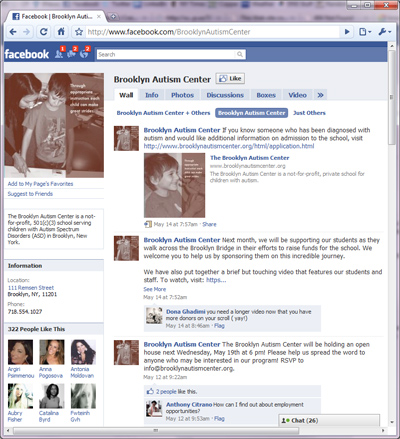
Want help with your non-profit’s fundraiser? We Can Help! Please call 303.499.9318 or 888.772.0777 to speak with a real person. Or click here to have a real person contact you now >>
Step 2: Landing Page
Once a person clicked through from the email campaign, they landed on a personalized page
(Welcome, $first $last) that displayed a video, how much money had been raised to date, and a link to donate now:
The video was designed to create an emotional connection to the students, and the “Donated To Date” system displayed the total amount of donations to create a sense of excitement. When someone clicked on the “Donate Now” Button, we used a Web 2.0 feature to instantly display the donation form (instead of waiting 8-12 seconds for another page to load).
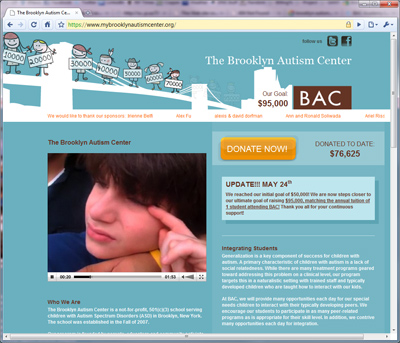
Step 3: Donation Page
The donation page was designed to be quick, fast and easy for people to make a donation. We limited the data fields to the “Need to know” information instead of the “nice to know information:”
We created the ability for someone to select a set amount to donate ($40, $100, $250, $500, $1000 or other amount), as well as the ability to donate anonymously.
We used an SSL certificate and PayPal to handle the transaction processing, and re-assured donors that all donations are fully tax-deductible. And as many charitable foundations (i.e. family foundations) are only able to make payments by check, we included the address as a way that donations could be sent in via mail.
Return on Investment (ROI): The base price for the campaign, including landing page, email deployment and payment processing gateway development was approximately $3,000.
With more than $75,000 raised, the return on the marketing investment was a staggering 26 times return (2,554%).
For every $1 spent with Customer Paradigm on the campaign, we helped generate $25.54 in donations to the organization.
Client Feedback: “We hired Customer Paradigm to assist us with an email marketing campaign to help raise funds for our school (which is a non-profit organization dedicated to providing high quality education to children with autism).”
“Among the many vendors we were entertaining, we chose Customer Paradigm because of their previous experience with non-profits and they seemed to offer all that we needed for the right $ amount.”
“Their full serviced email marketing package suited us best as non-marketing professionals and they worked both closely and patiently with us until we were extremely satisfied with our end product. We would not have been able to raise over $75,000 for the Brooklyn Autism Center if it weren’t for the dedicated team at Customer Paradigm.”
Summary: A well designed campaign, with strong calls to action generated a 25:1 return on the marketing campaign for the Brooklyn Autism Center, a 501(c)(3) non-profit organization.

